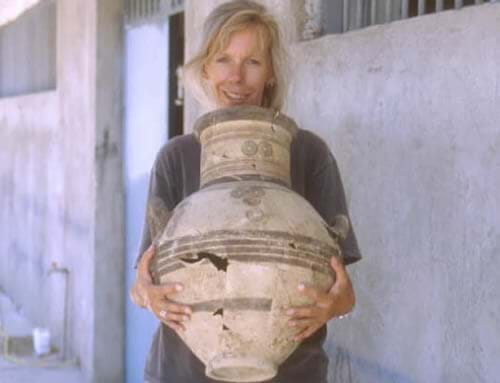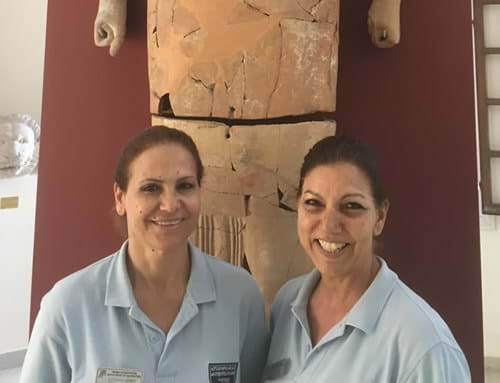The city of Polis, with churches dating from the sixteenth century, has a visible aura of history about it—yet the remains of two even older cities lie just beneath the surface. The ancient city kingdom of Marion and the later Roman and Byzantine city of Arsinoe thrived for several millennia. Excavators from the nineteenth century on explored the area’s many stone-cut tombs, bringing forth a rich variety of sculptures, vases, and jewellery. Yet until the start of the Princeton University Cyprus Expedition, little was known about the location of the two cities. Beginning in 1983, the expedition team conducted a gridded survey of open land, recording potsherds and other evidence of human habitation. In subsequent summers, they dug test trenches in areas with concentrated remains. Eventually the outlines of major public buildings emerged. And within those outlines lay a rich trove of material culture—including over 30,000 pieces of terra cotta sculpture. Notable finds are on display at the Archaeological Museum of Marion-Arsinoe in Polis. With major excavations completed in 2007, the expedition is now in an extended study period. Co-director Dr Nancy Serwint describes the process: After being photographed in situ, each artefact is registered, stored, repaired, cleaned, and photographed again. Then the work of interpretation and publication begins. Anassa offers an insider’s tour of the museum with Dr Serwint, who will introduce you to artefacts she excavated herself and explain what the size, colouring, and ethnic features of votive sculptures might say about those who offered them to the shrine.

